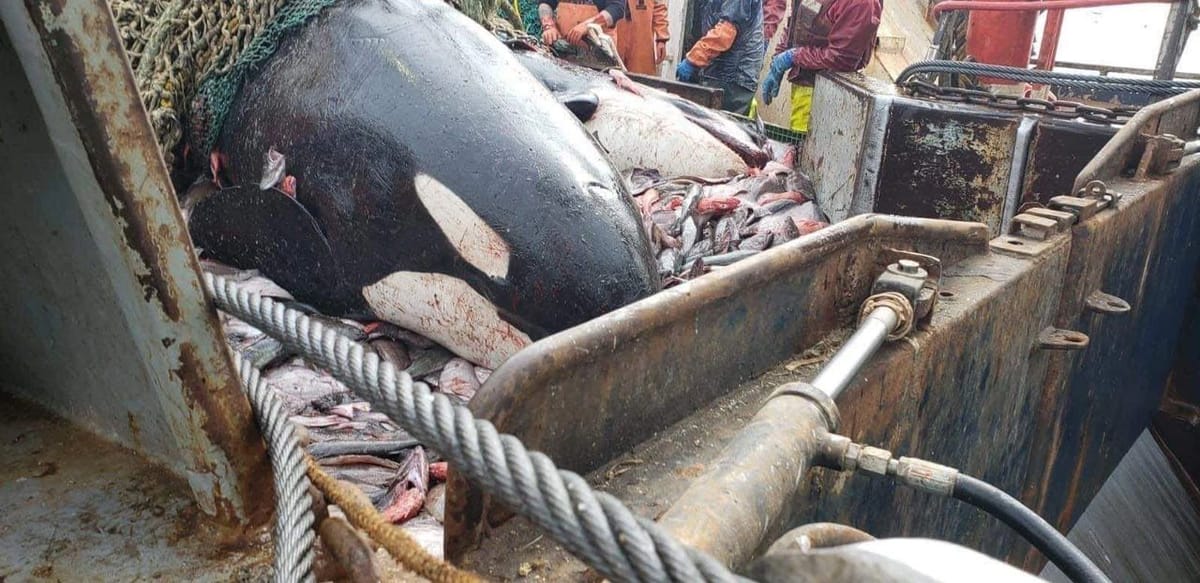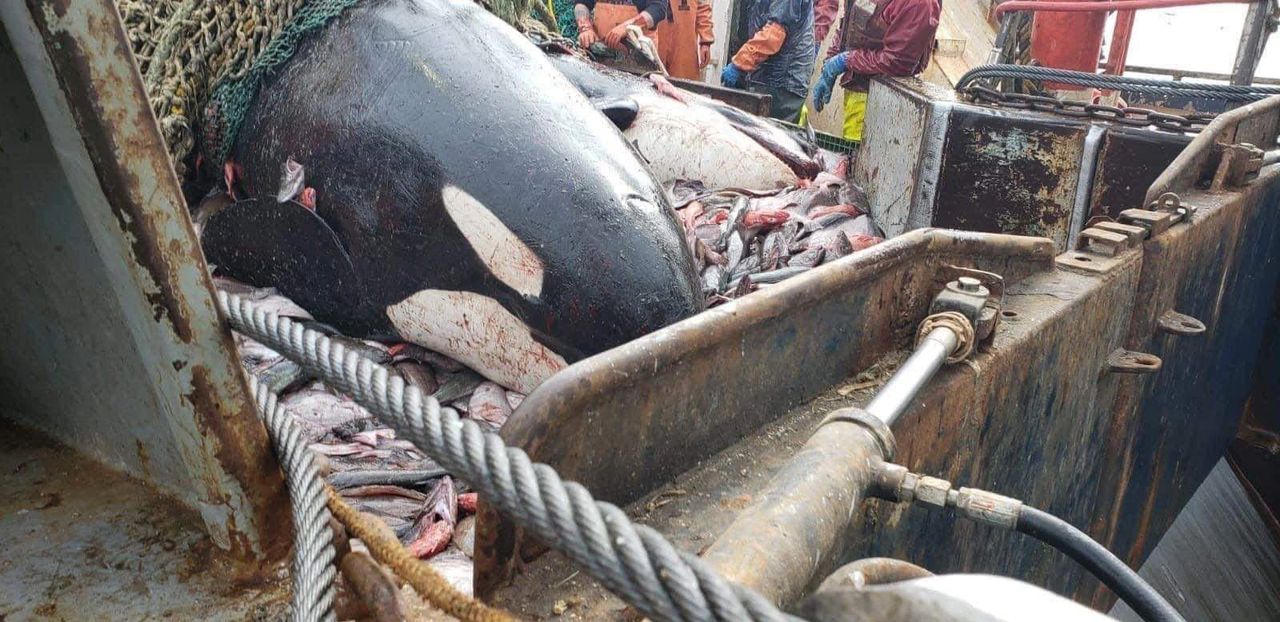Social Media Post Alleges Orcas Caught in Alaska Trawler Bycatch

A recent statement from NOAA seems to call into question claims about a photograph circulating on Alaskan social media alleging a pair of orcas were recently caught up in bycatch nets and not reported as required within 48 hours of the end of the fishing trip.
The photograph was seen on the social media platform Reddit, where a user stated the picture had been sent to them by a member of an Alaskan bycatch Facebook group who had received it anonymously with the intended goal of identifying the boat in question.

The picture was also posted to the STOP Alaskan Trawler Bycatch Facebook group last week.
According to the Oceana Organization, millions of tons of unintended fish, shellfish, and wildlife, such as marine mammals, sea turtles, and seabirds, die in fishing gear meant to catch other species. All that collateral damage is called "bycatch." Whales and dolphins get twisted up in nets and drown or starve to death as they struggle to swim.
The photograph provoked a strong reaction from some who have commented publicly on the post —many expressing sympathy for the orca. Others exercised caution and asked whether there was proof the picture was recently taken and whether the photo was even taken in Alaskan waters.
In a statement made to the NOAA Fisheries website, NOAA wrote:
"NOAA Fisheries would like to clear up the disinformation surrounding a photo being circulated on social media of two orca whales taken as bycatch by a trawler in Alaskan waters. NOAA Office of Law Enforcement has confirmed that the photo is from an April 2020 incident. In that case, there were two independent fisheries observers aboard the vessel. The orca takes were reported promptly by the observers and vessel owner/operator to NOAA Fisheries, as required.
We do not have any recent reports of bycatch involving orcas off Alaska.
The United States' science-based fishery management process is designed to provide optimum yield while preventing overfishing, minimizing bycatch, and protecting habitats where fish live. Section 118 of the Marine Mammal Protection Act allows for the incidental, but not intentional, takes of marine mammals in commercial fisheries. "Take" includes harassment, hunting, capturing, collecting, or killing of marine mammals. However, a marine mammal take is not legal unless it is reported by the vessel owners or operators through the Marine Mammal Authorization Program.
Bycatch of orcas in Alaska fisheries by any gear is very low. While incidental take of any individual marine mammal is concerning, NOAA Fisheries does not consider the low level of interactions between orcas and commercial fisheries in Alaska to have an adverse impact on any orca stock at a population level. No orca stocks in the Alaska region are listed as endangered, threatened, and/or candidate species under the Endangered Species Act.
Through the North Pacific Observer Program, our agency has rigorous methods for tracking catch and bycatch. At least two fisheries observers are required aboard all trawl catcher-processor vessels fishing off Alaska, so every haul is observed.
In addition to information collected by observers, vessel owners or operators must report to NOAA Fisheries all incidental mortalities and injuries of marine mammals that occur during commercial fishing operations. They must be reported within 48 hours of the end of the fishing trip under the law."
Well-meaning social media users had searched publicly available NOAA bycatch reports seeking information on the incident but came up empty-handed as last year's report has not been finalized or published, according to NOAA.
While NOAA isn't able to say with 100% certainty that the photograph is indeed from the unfortunate bycatch incident reported in 2020, similarities in the picture and the report made to NOAA last year — in addition to required observers on all trawl catcher-processor vessels fishing off Alaska, seem to support that theory.


